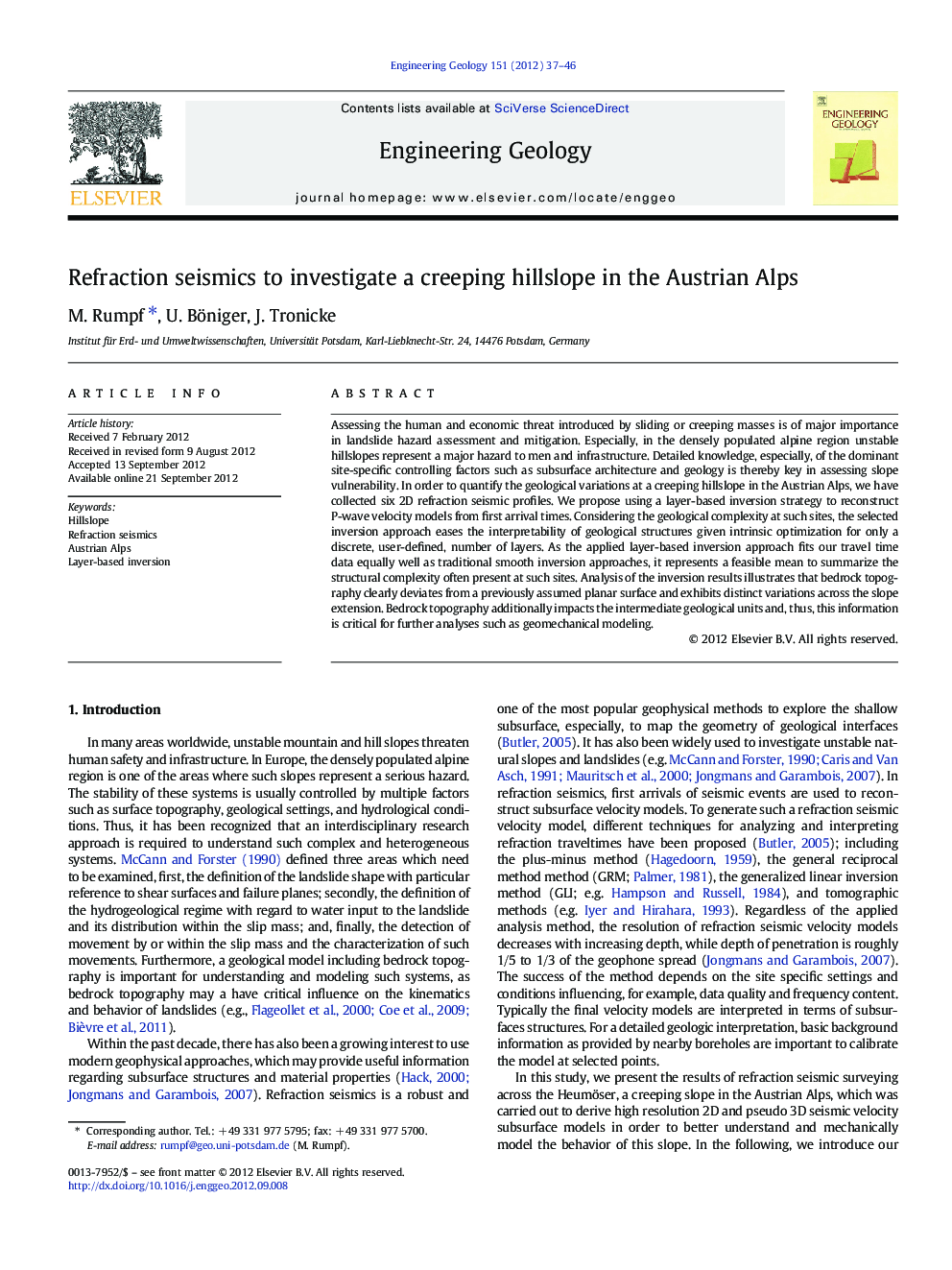| کد مقاله | کد نشریه | سال انتشار | مقاله انگلیسی | نسخه تمام متن |
|---|---|---|---|---|
| 4743902 | 1641832 | 2012 | 10 صفحه PDF | دانلود رایگان |

Assessing the human and economic threat introduced by sliding or creeping masses is of major importance in landslide hazard assessment and mitigation. Especially, in the densely populated alpine region unstable hillslopes represent a major hazard to men and infrastructure. Detailed knowledge, especially, of the dominant site-specific controlling factors such as subsurface architecture and geology is thereby key in assessing slope vulnerability. In order to quantify the geological variations at a creeping hillslope in the Austrian Alps, we have collected six 2D refraction seismic profiles. We propose using a layer-based inversion strategy to reconstruct P-wave velocity models from first arrival times. Considering the geological complexity at such sites, the selected inversion approach eases the interpretability of geological structures given intrinsic optimization for only a discrete, user-defined, number of layers. As the applied layer-based inversion approach fits our travel time data equally well as traditional smooth inversion approaches, it represents a feasible mean to summarize the structural complexity often present at such sites. Analysis of the inversion results illustrates that bedrock topography clearly deviates from a previously assumed planar surface and exhibits distinct variations across the slope extension. Bedrock topography additionally impacts the intermediate geological units and, thus, this information is critical for further analyses such as geomechanical modeling.
► Refraction seismic data are used to characterize an alpine creeping hillslope.
► A layer-based inversion strategy was used to generate P-wave models.
► Calibration data from two boreholes are used to interpret the velocity models.
► Mapped structures are believed to be a key point in understanding the mass movement.
Journal: Engineering Geology - Volume 151, 29 November 2012, Pages 37–46